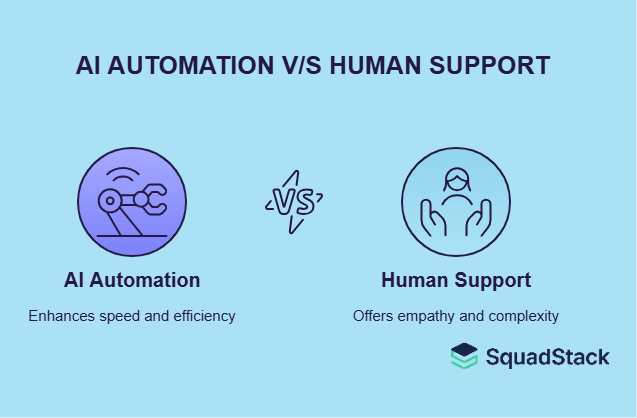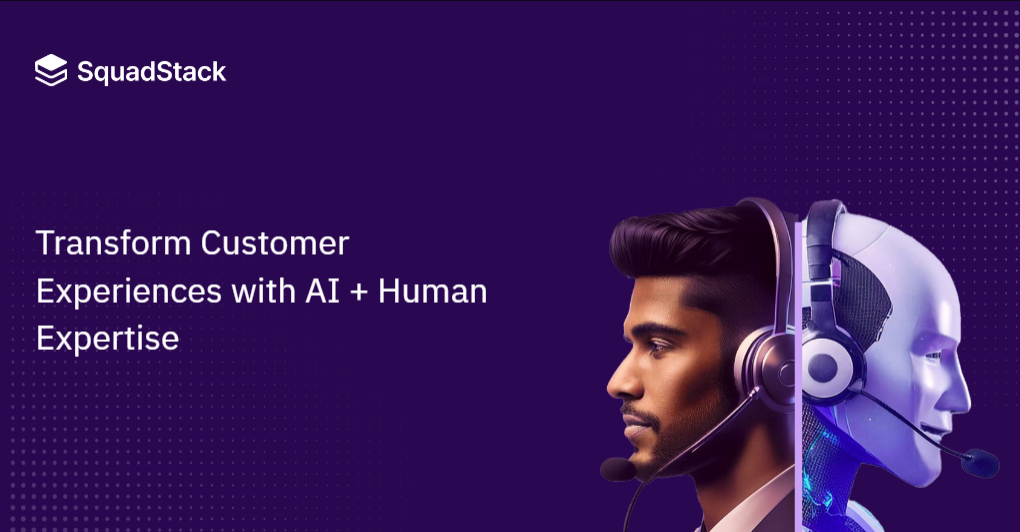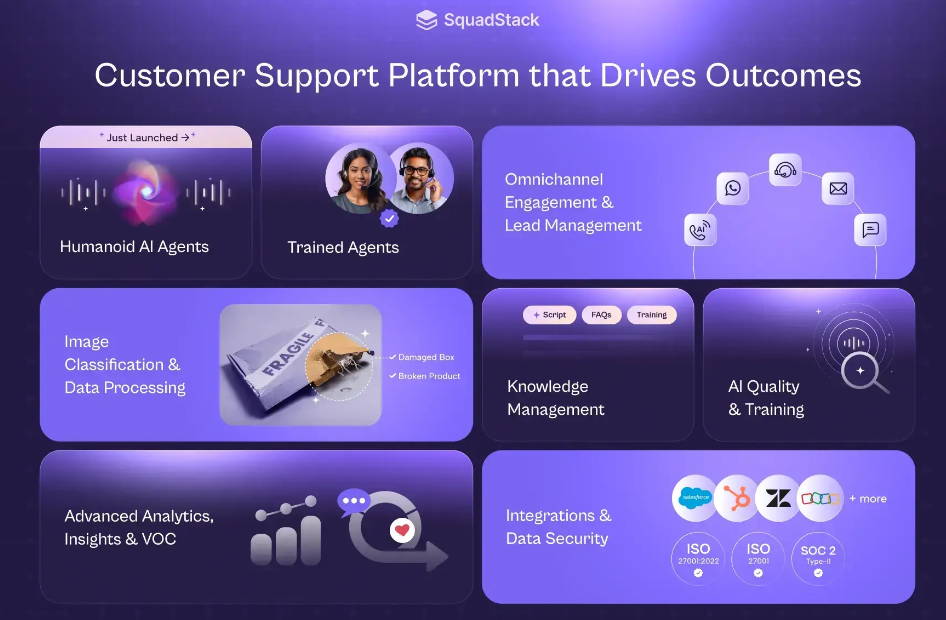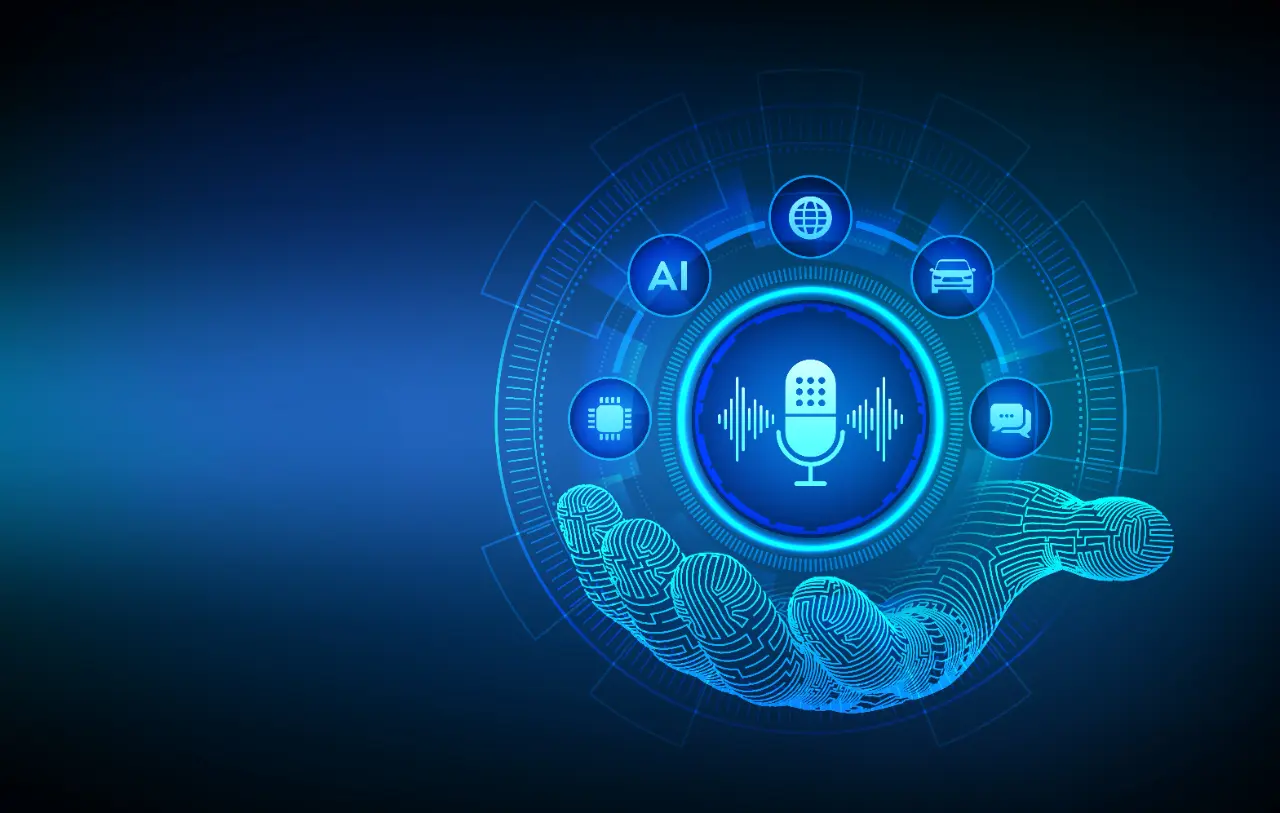Imagine texting your bank at 3 a.m. and getting an answer before you hit send. That’s the power of AI customer service automation: it never sleeps, never pauses. What once seemed futuristic is now the baseline expectation. AI in customer service is important for delivering fast, personalised support 24/7, significantly boosting agent efficiency and satisfaction. In 2025, McKinsey reports that up to 70% of support contacts could be routed through AI systems , transforming reactive teams into proactive, scalable engines.
But it's not just about speed or efficiency. Deloitte highlights how generative AI is used for summarising calls and can shave an average of three minutes off each interaction, freeing agents to focus on complex, empathetic support. Meanwhile,
AI customer service automation uses chatbots, voice bots, and machine learning tools to manage customer queries and streamline feedback. They assist companies in providing each customer with a personalised response based on previous interactions. These tools can understand questions using natural language processing (NLP), deliver instant responses from help documents, CRM data, or past conversations, and escalate complex issues to humans when necessary.
In this article, we'll explore the latest research-backed benefits, real-world implementations, essential best practices, and future trends in AI customer service automation. All are designed to help you outrank competitors and deliver an authoritative guide.

What Is AI Customer Service Automation?
In a world where customers expect quicker responses than ever, the traditional model of waiting in line or on hold is no longer acceptable. AI customer service automation is a revolutionary solution that uses artificial intelligence to streamline and enhance support across voice, chat, and digital channels. Instead of repetitive manual tasks, AI now answers questions, directs queries, and even anticipates what customers want before they ask.
AI customer service automation involves technologies like chatbots, voice assistants, NLP, and machine learning to automate real-time support functions. Unlike rule-based systems of the past, today's AI adapts to each conversation, learns from past interactions, and gets better over time.

Key Technologies Behind AI Customer Service Automation
To understand how AI customer service automation operates, it is crucial to recognise the technologies that make it innovative, scalable, and conversational. These advancements enable AI to go beyond scripted responses and provide personalised, intelligent interactions across millions of users' touchpoints.
Natural Language Processing (NLP)
Natural Language Processing enables AI systems to comprehend, interpret, and respond to human language across various formats, including text, speech, and slang. In customer service, NLP powers chatbots and voice assistants to understand customer intent, extract relevant data, and respond accurately. AI can detect nuances such as frustration or urgency and route conversations accordingly. For example, if a user types, "I'm distraught my refund hasn't arrived," NLP identifies the sentiment and urgency to escalate the ticket instantly.
Machine Learning (ML)
Machine Learning enables customer service automation tools to improve continuously without manual updates. By analysing thousands of past conversations, ML models identify successful response patterns, detect new topics, and fine-tune responses to better match customer needs. This results in more intelligent bots that can handle increasingly complex queries. For instance, if many users start asking about a new product feature, the AI automatically learns the pattern and adjusts its future responses accordingly.
Conversational AI
Conversational AI integrates NLP, ML, and dialogue management to create fluid, two-way conversations with customers, often indistinguishable from those with human agents. Unlike basic bots that follow scripts, conversational AI adapts in real-time, remembers context, and handles multi-step queries. It powers live chat, WhatsApp bots, voice assistants, and more. A customer can ask, "Where's my order?" and follow up with, "Can I change the delivery address?" The bot will handle both seamlessly.
Generative AI (like GPT)
Generative AI transforms how responses are crafted. Instead of pre-written templates, it dynamically generates responses tailored to the customer's tone, query, and history. It can rewrite messages for clarity, summarise long conversations, or compose empathetic responses to sensitive queries. For example, insurance or healthcare support helps deliver compliant and compassionate replies. Brands like Allstate already use this technology to craft emotionally intelligent customer emails.
Predictive Analytics
Predictive analytics leverages historical customer data, such as past tickets, browsing behaviour, or call logs, to forecast future needs or issues. It allows AI to act before a problem escalates, offering proactive solutions. For example, if a subscription service sees that a user hasn't logged in for weeks, the system may automatically trigger a "Need help?" message or special offer. Similarly, it can predict churn risk and escalate high-priority customers to human agents.
Together, these tools form the backbone of intelligent automation, enabling businesses to reduce response times, enhance customer satisfaction, and deliver support that scales without compromise.
.webp)
How AI Automation Differs from Traditional Automation?
Many confuse AI automation with the older generation of rule-based tools. While both aim to improve efficiency, they operate on fundamentally different principles. Traditional automation is rule-driven, rigid, and limited in scope. In contrast, AI customer service automation is dynamic, contextual, and constantly learning, offering a far more personalised and scalable support experience. Here's a side-by-side breakdown:
With AI, support systems don't just automate, they understand, learn, and evolve. This empowers businesses to handle complex queries, reduce friction, and boost customer satisfaction at scale.
Why Businesses are Rapidly Adopting AI-Based Automation in Customer Services?
In an era where 75% of consumers expect support within five minutes, slow or fragmented service can cost you more than just a sale. It can result in losing the customer entirely. Businesses are under pressure to meet these real-time expectations while scaling efficiently, reducing costs, and staying ahead of competitors. That's where AI customer service automation becomes essential, not merely a luxury.
24/7 Availability and Faster Resolution Times
AI enables companies to offer round-the-clock service without expanding headcount or compromising quality. Customers today engage across multiple time zones and platforms, including WhatsApp, email, in-app messaging, and voice calls. With AI agents instantly handling initial queries, businesses drastically reduce response times.
- According to IBM, AI-powered chatbots can reduce average first response time (FRT) by up to 80%.
- Customers receive immediate assistance with fundamental issues, such as password resets, order tracking, or service availability, while human agents address more complex queries.
- This instant response model improves CSAT and ensures higher retention and trust.
With faster replies and 24/7 consistency, AI meets modern customer expectations in ways traditional teams simply can't.
Reducing Operational Costs and Agent Workload
One of the most compelling reasons businesses turn to AI is cost efficiency. Automating repetitive queries significantly reduces ticket volume and agent burnout, while maintaining high service quality.
- Gartner reports that AI automation can reduce support costs by up to 30%, particularly in contact centres handling high ticket volumes.
- Juniper Research estimates that chatbots alone will save businesses over $8 billion annually by 2026, up from $2.8 billion in 2022.
- AI tools reduce the need for a large Tier 1 support team by offloading repetitive tasks, such as account updates, delivery status inquiries, and appointment bookings.
With AI managing the bulk of front-line support, agents can handle fewer but higher-value conversations, resulting in improved productivity and morale.
Improving Customer Experience and Satisfaction
AI customer service automation doesn't just make life easier for companies; it creates better customer experiences. AI tools enhance the support journey by providing faster, more accurate, and more personalised responses.
- AI systems use real-time sentiment analysis to detect customer frustration, triggering escalation or tone adjustments.
- Generative AI generates human-like, empathetic responses that resonate more effectively with users.
- Predictive models flag potential issues before they escalate, offering proactive service that feels attentive and thoughtful.
According to Zendesk, companies that utilise AI in customer service report a 25–30% increase in CSAT scores, faster resolution times, and fewer repeat tickets. When your customers feel heard and helped instantly and intelligently, they're far more likely to stay loyal.
.webp)
Real-World Examples of AI Customer Service Automation in Action
It's one thing to discuss the potential of AI in customer service; it's another to see it in action at scale. In 2025, global enterprises and digital-first brands are leveraging AI customer service automation to reduce costs, enhance agent efficiency, and deliver a more delightful customer experience. According to Accenture, 91% of high-performing companies are increasing investment in AI automation for support.
SquadStack: Automating Lead Qualification and Support with AI Agents
SquadStack is improving customer conversations in industries like real estate, insurance, and financial services etc. by deploying autonomous AI agents that qualify leads, handle FAQs, and provide personalised responses at scale via both voice and chat.
- Their AI agents engage with leads across channels (calls, WhatsApp, SMS) to qualify them using conversational intelligence, saving human teams hundreds of hours per month, thus improving the connectivity up to 90%.
- The system adapts tone, urgency, and pitch in real-time based on signals that include sentiment, language preferences, and intent.
- These AI-powered conversations handle first-level support and seamlessly escalate high-intensity or complex queries to human agents for further assistance.
Amazon and Shopify: Smart Chatbots for Order Tracking and FAQs
Without human intervention, Amazon and Shopify have deployed advanced AI chatbots that handle millions of daily customer interactions related to order tracking, returns, payment issues, and account queries.
- Shopify's AI responds to merchants 24/7 across email, chat, and mobile app, resolving up to 70% of Tier 1 queries autonomously.
- Amazon's AI assistant integrates with Alexa and mobile chat to provide real-time delivery updates, initiate returns, and collect feedback.
- These bots are trained on domain-specific data, enabling highly relevant and context-aware replies.
Lufthansa: Multilingual AI Agents for Global Travellers
Lufthansa has launched AI-powered multilingual chatbots that assist travellers with flight updates, rebooking options, baggage tracking, and more, in over 12 languages.
- The bots are available across mobile devices, websites, and messaging apps, ensuring consistent service regardless of platform or geography.
- AI systems automatically send proactive notifications and rebooking links during high travel volume or disruptions (like weather delays).
- This has significantly reduced customer wait times and improved Lufthansa's global service coverage.

Features of Modern AI Customer Service Tools
Not all AI tools are created equal. While many solutions promise automation, only a few deliver the intelligence, flexibility, and integration needed to meet today's customer expectations. A robust AI customer service automation platform isn't just about answering questions; it's about doing it contextually, empathetically, and at scale.
In 2025, the best-performing tools combine conversational intelligence with backend connectivity, learning capabilities, and emotional sensitivity. These features turn AI from a basic bot into a business asset that boosts efficiency and customer loyalty.
Conversational AI Chatbots and Voice Bots
The core of any AI-powered support system is its ability to engage in natural, intelligent conversations across both text and voice. These bots do more than just answer FAQs; they engage in multi-step, context-rich dialogues.
- Chatbots today can handle 60–80% of Tier 1 support queries, from password resets to order issues.
- Voice bots utilise ASR (automatic speech recognition) and NLP to understand spoken language and respond accordingly, thereby reducing inbound call volumes.
- Platforms like Google Dialogflow, Yellow.ai, and SquadStack's voice agents excel in blending human tone with machine precision.
This allows businesses to provide always-on, scalable customer engagement without compromising personalisation.
Generative AI for Personalised and Empathetic Replies
Integrating generative AI (such as GPT models) enables tools to craft custom responses that appear empathetic and human, even for complex or emotionally charged queries.
- Instead of using templated replies, GenAI writes responses on the fly based on the customer's message, sentiment, and context.
- It can rewrite agent replies for clarity, summarise entire threads, or automatically draft follow-up messages.
- Brands like Allstate and Klarna already use this to reduce resolution times while improving customer satisfaction.
This emotional intelligence adds a new layer of quality to support interactions, particularly in sensitive industries such as healthcare, insurance, or finance.
Smart Ticket Routing and Escalation
A key to fast support is getting the query to the right person or system at the right time. AI can intelligently classify and prioritise tickets based on urgency, intent, and context.
- AI models use language cues and customer history to determine whether a bot can resolve an issue or if human intervention is needed.
- Critical or VIP cases are escalated automatically, reducing friction and wait time.
- Routing can be optimised based on skill sets, availability, and language preference.
This ensures that every customer receives the fastest, most qualified response, without having to jump through hoops.
Sentiment Analysis and Contextual Understanding
Knowing what the customer feels, even if they don't say it outright, is a significant advantage of AI in support.
- Sentiment analysis tools evaluate language, punctuation, and emoji usage to gauge whether a customer is happy, neutral, or angry.
- The AI can then adjust tone, offer apologies, or escalate the case based on emotional triggers.
- It also preserves context across channels and sessions, so customers don't need to repeat themselves when switching from chat to phone.
This leads to smoother, more frustration-free experiences and demonstrates to customers that the brand is truly listening to them.
AI-Powered Self-Service Knowledge Bases
Modern AI tools do more than just respond; they enable customers to help themselves by surfacing the most relevant content when needed.
- AI suggests supporting articles, videos, or FAQs based on the user's real-time query.
- It can also automatically generate new help documents from recurring queries or past tickets.
- When paired with analytics, it helps identify content gaps and recommend improvements.
This reduces inbound ticket volume, especially for recurring issues, and empowers customers to solve problems quickly and independently.
Also check AI Call Centre
.webp)
5-Step Process: How to Successfully Implement Customer Service Automation
Implementing AI customer service automation isn't just about installing a chatbot; it's about designing a more innovative support system that fits your business goals. A rushed deployment can frustrate customers, waste resources, and damage your brand. To get it right, follow these five essential steps used by high-performing AI adopters in 2025.
Step 1: Define Business Goals and Identify Use Cases
Before jumping into tools and integrations, first define your "why." What problems are you solving? Which tasks can AI realistically automate without harming the customer experience?
- Audit current support processes to identify repetitive, high-volume queries.
- Align automation with clear business objectives, such as reducing response time or lowering ticket volume.
- Select initial use cases, such as lead qualification, appointment booking, FAQ handling, or feedback collection.
Step 2: Choose the Right AI Tools and Vendors
Your AI success depends heavily on the tools and vendors you choose. Look for platforms that are not only powerful but also flexible and industry-ready.
- Evaluate platforms that offer NLP, generative AI, omnichannel capabilities, and CRM integrations.
- Consider industry-specific players, such as SquadStack, for verticals like real estate and insurance.
- Prioritise vendors with explainable AI, privacy compliance, and responsive support teams.
Step 3: Pilot, Train, Measure, and Iterate
Start small to avoid large-scale mistakes. A pilot program allows you to learn, adapt, and improve before a full rollout.
- Utilise authentic historical tickets or transcripts to train your AI agent effectively.
- Launch a limited-scope pilot (e.g., Tier 1 live chat or WhatsApp bot) and gather user feedback.
- Track metrics like FRT (first response time), resolution time, CSAT, and escalation rate to refine performance.
Step 4: Keep the Human in the Loop
AI enhances service, it doesn't eliminate the need for humans; human agents should still play a central role in high-stakes or complex situations.
- Define escalation rules based on sentiment detection or bot confidence thresholds.
- Enable agents to view AI chat summaries and seamlessly continue conversations.
- Train support staff to manage AI outputs and intervene when human assistance is required to add value.
Step 5: Address Compliance and Security Concerns
Handling customer data comes with legal and ethical responsibilities. AI systems must be secure, fair, and fully compliant with regulations.
- Ensure that tools are GDPR, CCPA, and DPDP compliant, taking into account your geographical location.
- Use encryption, audit trails, and role-based access controls to protect user data.
- Monitor AI outputs for hallucinations, biases, or policy violations, especially in sensitive industries.
A thoughtful, phased approach ensures that AI-driven customer service automation not only saves money but also enhances the customer experience, boosts retention, and establishes a future-proof support operation.
.webp)
Measuring the ROI of AI-Based Customer Service Automation
AI in customer service isn't just about flashy features; it's about delivering measurable business value. However, many companies struggle to quantify the return on their AI investments. That's why tracking the right metrics before and after deployment is essential to prove success and scale effect. Section' llon, we'll break down key performance indicators (KPIs), cost-saving insights, and customer experience metrics, demonstrating how AI customer service automation pays off, financially and operationally.
Step 1: Track Cost Reduction and Ticket Deflection
One of the most direct ways to measure ROI is by calculating the amount saved by reducing human workload and deflecting tickets that would otherwise require agent time.
- Monitor the percentage of tickets fully resolved by AI (also known as the ticket deflection rate).
- Calculate the reduction in cost per ticket by comparing pre-and post-AI automation periods.
- Factor in lower hiring needs or reduced overtime costs due to the automation of Tier 1 queries.
Step 2: Measure Improvements in Response and Resolution Times
Speed is critical in customer service. AI's real-time capabilities often lead to massive gains in First Response Time (FRT) and Average Resolution Time (ART).
- Benchmark FRT and ART before and after AI deployment.
- Identify which use cases or channels show the most significant gains in efficiency.
- Correlate faster resolution with increased customer satisfaction and retention rates.
Step 3: Monitor Customer Satisfaction and Sentiment Shifts
Happy customers stick around. AI customer service automation helps improve customer sentiment by reducing wait times and delivering accurate, empathetic responses.
- Track CSAT (Customer Satisfaction Score), NPS (Net Promoter Score), and CES (Customer Effort Score) regularly.
- Utilise sentiment analysis to observe how the emotional tone evolves across automated interactions.
- Measure customer complaints, negative reviews, or support friction points before and after automation.
Step 4: Evaluate Agent Productivity and Morale
AI helps reduce burnout, allowing agents to focus on meaningful and complex work. That translates into better performance and lower attrition.
- Measure the volume of tickets handled per agent post-AI implementation.
- Track average handling time (AHT) and the number of escalations required.
- Collect qualitative feedback from your team about workload, efficiency, and job satisfaction.
Step 5: Analyse Long-Term Revenue and Retention Impact
While harder to isolate, the indirect ROI of AI, such as higher retention, fewer refunds, or more repeat purchases, can significantly improve revenue over time.
- Analyse churn rates before and after automation to identify the impact on customer loyalty.
- Track upsell and cross-sell conversions initiated through AI support channels.
- Combine support data with CRM insights to evaluate lifetime customer value (LCV) uplift.
.webp)
Common Challenges and How to Avoid Them
Implementing AI-driven customer service automation presents real-world challenges. However, each challenge can be solved with the right strategy. Here's a quick-reference table showing the top 5 challenges businesses face, and how to overcome them effectively:
How SquadStack Is Leading the AI Customer Service Automation Platform in India?
While many platforms promise automation, SquadStack delivers intelligent, scalable, and results-driven AI customer service automation. Tailored for industries like insurance, real estate, and financial services, SquadStack combines the power of voice bots, chat automation, and lead intelligence to supercharge customer conversations.
What sets SquadStack apart is its AI-first approach to high-intent customer engagement. Its autonomous agents don't just respond, they qualify leads, engage customers proactively, and route complex queries to human agents when needed. This hybrid model ensures that businesses benefit from the cost efficiency of automation without sacrificing the personalisation of a human touch. Some key benefits of SquadStack's AI platform include:
- Multichannel AI agents that operate across voice, WhatsApp, SMS, and more
- Vertical-specific customisation for BFSI, real estate, and edtech use cases
- Lead qualification automation, saving sales teams hundreds of hours each month
- Smart escalation logic based on intent, sentiment, and buyer stage
- Live analytics and dashboards to track agent performance and conversion metrics
- Compliance-ready conversations, aligned with GDPR and India's DPDP regulations
- Easy CRM integrations with platforms like HubSpot, Salesforce, and LeadSquared
With SquadStack, businesses aren't just automating, they're optimising every customer touchpoint for conversion, retention, and satisfaction. If you're looking to deploy AI that genuinely moves the needle, SquadStack is one of the most reliable partners in the space.

Conclusion: Embracing the New Era of Customer Experience
AI customer service automation is no longer a futuristic concept; it's today's competitive advantage. From instant resolutions and 24/7 availability to empathetic conversations and predictive insights, AI transforms how businesses engage with customers. The shift isn't just about cost savings; it's about delivering smarter, faster, and more human-centric support at scale.
In 2025, customers expect more than scripted replies and slow email chains. They demand real-time help, personalisation, and proactive service. With the right strategy, tools, and implementation roadmap, AI allows businesses to meet and exceed those expectations, building deeper trust and long-term loyalty. However, successful automation isn't about replacing humans but enabling your teams to do more with less. When deployed thoughtfully, AI becomes your frontline efficiency engine and backend experience enhancer, allowing agents to focus on complex, high-value interactions.







